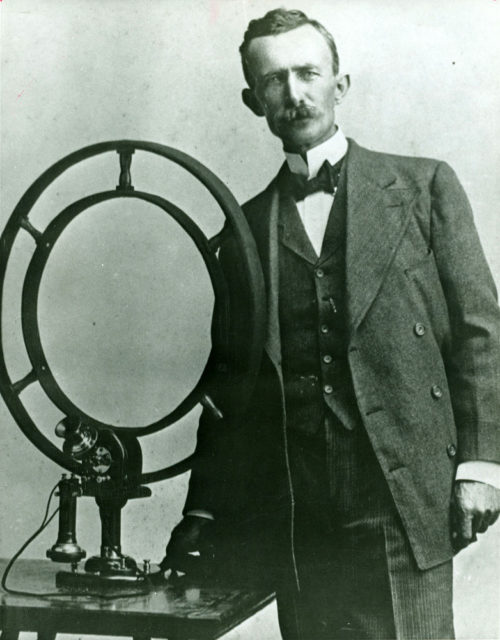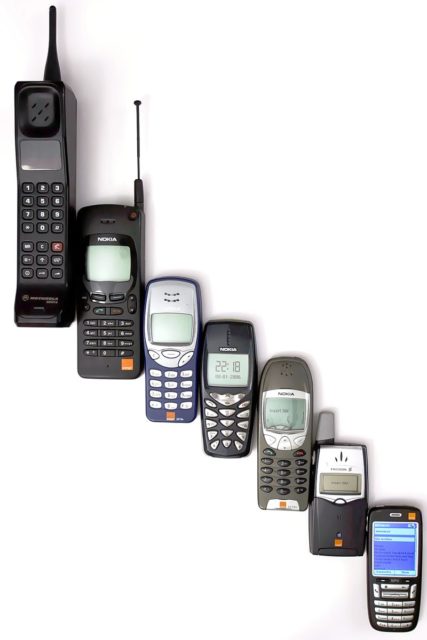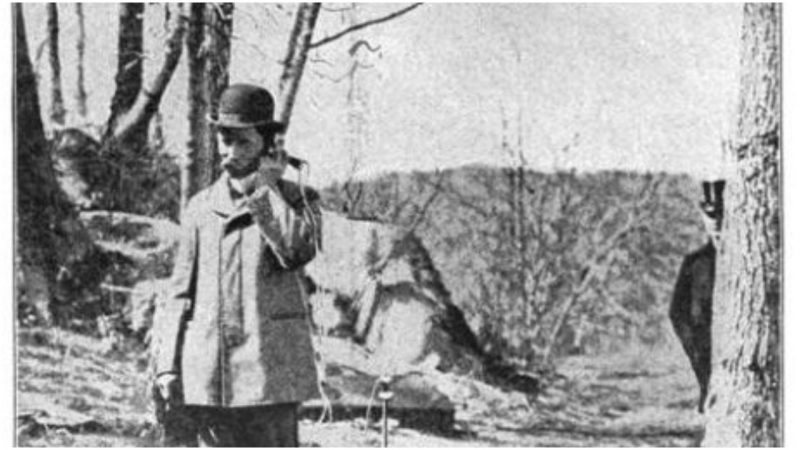The mobile phones today, devices small enough to fit in a pocket but can call almost anywhere in the world, make communication easier than ever before. However, the world’s first mobile phone would be practically unrecognizable today. Invented in 1902, it was the size of a garbage can and had a range of just half a mile. Its inventor was the self-described “practical farmer, fruit grower and electrician” Nathan Stubblefield, who was recognized as the father of mobile technology after he patented his “wireless” invention.
Stubblefield grew up in Murray, Kentucky, departing as a young teenager to enroll at the Male and Female Institute in nearby Farmington. Unfortunately, his education ended because of his father’s death, leaving Stubblefield in the custody of his step-mother. Despite some unpleasant circumstances, he never stopped educating himself by reading scientific publications, such as Scientific American and Electrical World. His marriage brought him a family of nine children, whom he supported by farming. His inventiveness and industry led him to open a home school called “the Nathan Stubblefield Industrial School” or “Teléph-on-délgreen Industrial School.”
During his lifetime he devoted may hours and invested his small amount of money to establish a telephone service in his hometown, trying to connect the separated households in the area. His attempts began in 1886, when he began to sell and install acoustic telephones that carried sound vibrations between two distant sound boxes through a taut wire instead of electricity. He succeeded in stretching his sale to Mississippi and Oklahoma. This success was soon followed by another as he received the U.S. Patent 378,183 for the design of a “mechanical telephone,” co-created with his partner Samuel Holcomb. However, he was soon put out of business by the far superior Bell Telephone franchise of electric telephones.
Nevertheless, Stubblefield was not discouraged by being out of the “phoning” game for a while, figuring that with a wireless system he could connect to Kentucky without the additional expense of putting up poles or cables and, moreover, he would find his own market. He focused on electromagnetic induction for his initial design.

In his orchard, Stubblefield constructed a 120-foot mast, which was able to transmit speech from one telephone to another by using magnetic fields, creating an induction phone. Over the next several years, Stubblefield experimented with his phone but never succeeded in making it work in greater distances. Then, he decided to turn to a new product: a wireless phone based on natural conduction.
The total amount of wire required for the coils in the phone was longer than what was necessary to obtain a simple connection but the invention allowed mobility. He simply practiced one common notion–water conducts electricity. So the system used a body of water or earth as a medium that transmitted voice, instead of using wires in an electrical circuit.
Stubblefield demonstrated and promoted his device in the public town square in Murray on New Year’s Day in 1902, broadcasting music and voice to receivers, one of them at a distance of five blocks. A reporter was immediately sent to interview the inventor, who in the interview predicted that his new device would be used to transmit news and information all over the world.
A group of New York entrepreneurs were interested in the story, offering half a million shares of stock to Stubblefield in the Wireless Telephone Company of America in exchange for the rights to his remarkable invention. He accepted the offer and soon performed public demonstrations in Washington and Philadelphia that were covered by the media. However, a demonstration in Battery Park, New York City, failed. The cause was probably background noise caused by the numerous electrical circuits that were previously grounded in the densely populated area. Stubblefield began to suspect that he was involved in a stock-fraud scheme, doubts that were realized when the Wireless Telephone Company of America closed down.

Stubblefield never recovered from this failure, although in 1908 he patented a new version designed to communicate between moving vehicles such as boats and trains and way stations.
His inventions were not commercially successful, and he was left penniless. He died alone in 1928, his body found days later in a remote, crude shelter in Kentucky.
Today Nathan Stubblefield is credited with being the father of modern mobile communication and he is honored on the Virgin Mobile website, with Virgin’s founder Sir Richard Branson saying: “Nathan is the father of the mobile phone and I’m thrilled we can celebrate the 100-year anniversary of his invention that in some way went on to change the way the world communicates.”
